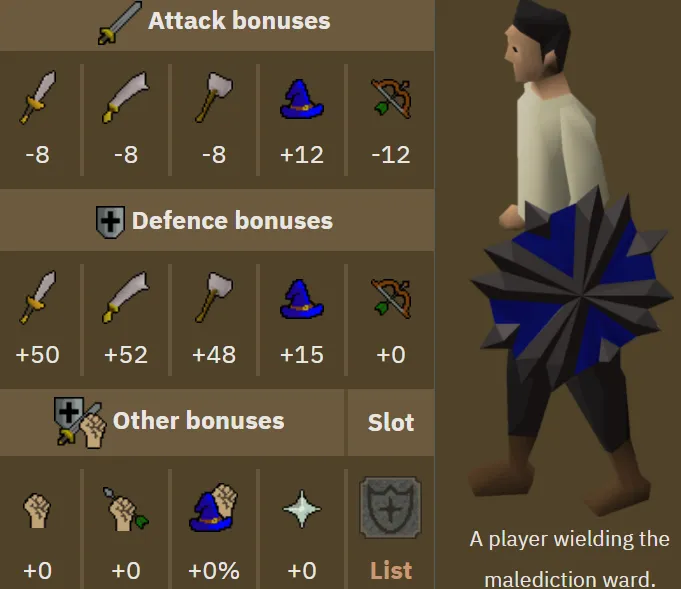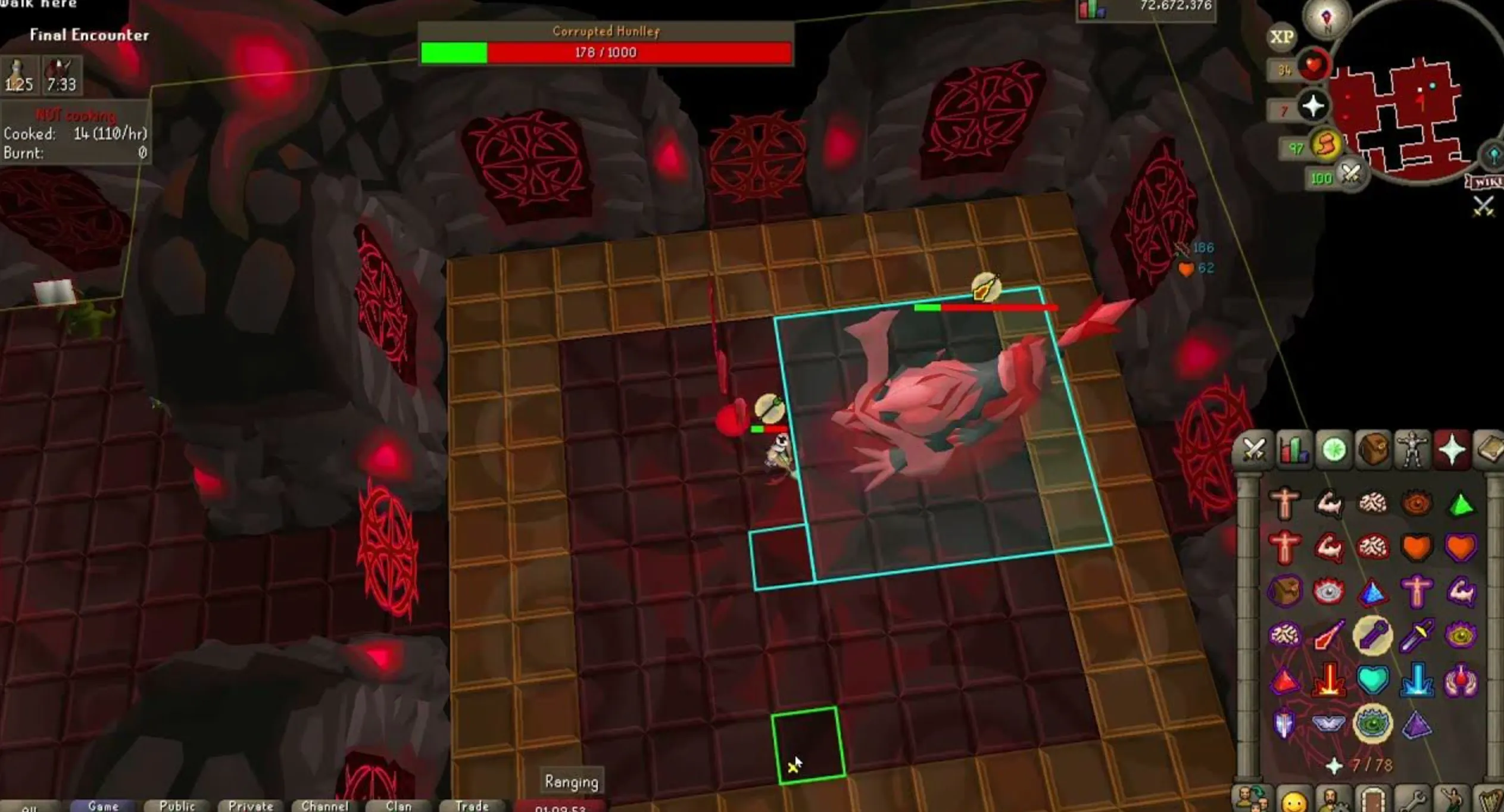Your cart is empty
Dark Mage Abyss OSRS Guide Unlocking Runecrafting Secrets

The Abyss in Old School RuneScape (OSRS) is a mysterious and dangerous dimension that offers unparalleled access to runecrafting altars, and at its heart stands the enigmatic Dark Mage. This Zamorakian initiate plays a pivotal role in maintaining the abyssal rift, making him a key figure for players looking to optimize their runecrafting grind. In this comprehensive guide, we’ll dive deep into the Dark Mage, the Abyss, and how to leverage this area for efficient gameplay. Whether you’re a seasoned runecrafter or a curious adventurer, this blog post will equip you with everything you need to navigate the Abyss and interact with the Dark Mage effectively.
The Dark Mage is a Zamorakian disciple located at the center of the Abyss, tasked with keeping the abyssal rift open. This allows the Zamorak Magical Institute (Z.M.I.) and players who have completed the Enter the Abyss miniquest to access runic altars without talismans (except for Astral and Wrath altars). His role is critical, as he warns that any lapse in concentration could lead to catastrophic consequences, like heads exploding or the universe collapsing. Beyond his ominous dialogue, the Dark Mage offers practical services that make him indispensable for runecrafters.
Key Services Provided by the Dark Mage
- Pouch Repairs: He repairs degraded runecrafting pouches for free, even if they’re in your bank, saving you time and resources.
- Replacement Items: Lost your abyssal book or small pouch? The Dark Mage provides replacements at no cost.
- Treasure Trails Clue: He’s the solution to the hard anagram clue “DEKAGRAM,” requiring the answer “13” to progress.
These services make the Dark Mage a central hub for runecrafting efficiency, especially for players using the Abyss to craft multiple rune types in one trip.
Understanding the Abyss in OSRS
The Abyss is a unique dimension in OSRS, described as the “glue” between planes, with time and space behaving differently than in Gielinor. It’s a high-risk, high-reward area for runecrafting, offering direct access to most runic altars. However, accessing it comes with challenges, including navigating the Wilderness and surviving the outer ring’s aggressive monsters.
Structure of the Abyss
The Abyss is divided into two rings:
- Outer Ring: A multicombat area filled with abyssal monsters like leeches, guardians, and walkers. Players are skulled and have their prayer drained to zero upon entry, making it dangerous.
- Inner Ring: A safe area containing rifts to runic altars and the Dark Mage. To reach it, players must pass skill-based obstacles like mining rocks or chopping tendrils.
Accessing the Abyss
To enter the Abyss, you must complete the Enter the Abyss miniquest. Here’s a quick overview:
- Talk to the Mage of Zamorak north of Edgeville in level 5 Wilderness.
- Meet him at the Varrock Chaos Altar and receive a scrying orb.
- Teleport to the rune essence mine from three different locations (e.g., Aubury in Varrock, Wizard Sedridor in Draynor, or Wizard Cromperty in Ardougne).
- Return to the Mage of Zamorak to complete the quest, earning 1,000 Runecrafting XP, an abyssal book, and a small pouch.
Once completed, the Mage of Zamorak can teleport you to the Abyss from the Wilderness, but beware of player killers in this low-level Wilderness area.
Why Use the Abyss for Runecrafting?
The Abyss is one of the fastest ways to craft runes in OSRS because it eliminates the need for talismans or tiaras (except for Astral and Wrath altars) and allows quick access to multiple altars in one trip. This is especially useful for crafting high-level runes like law, death, or blood, which have specific quest requirements.
Rune Altar Requirements
| Rune Altar | Quest Requirement | Additional Notes |
|---|---|---|
| Cosmic | Lost City | – |
| Law | Troll Stronghold | No weapons or armor allowed (Entrana restrictions). |
| Death | Mourning’s End Part II | – |
| Blood | Sins of the Father | Can access Kourend’s Blood Altar with dark essence. |
| Soul | – | Requires dark essence at Kourend’s Soul Altar first. |
Benefits of Abyss Runecrafting
- Speed: Craft multiple rune types without long travel times.
- Essence Pouches: Increase essence capacity, boosting XP rates.
- Profit: High-level runes like blood and law are valuable on the Grand Exchange.
However, the Abyss’s dangers, like Wilderness PKers and abyssal monsters, require careful preparation.
Tips for Safely Navigating the Abyss
Surviving the Abyss and reaching the Dark Mage requires strategy and preparation. Here are some practical tips to minimize risks and maximize efficiency.
Gear and Inventory Setup
- Armor: Wear dragonhide or other magic-resistant armor to reduce damage from abyssal monsters and potential PKers.
- Abyssal Bracelet: Prevents auto-skulling upon entering the Abyss, preserving your items.
- Weight-Reducing Items: Use boots of lightness or a spotted cape to conserve run energy.
- Teleport Items: Carry an Amulet of Glory or teleport tablets to return to Edgeville after crafting.
- Pouches: Bring all available runecrafting pouches to maximize essence capacity.
Dealing with Wilderness Risks
The Mage of Zamorak is located in level 5 Wilderness, making you vulnerable to PKers. Follow these steps:
- Travel along the east side of the River Lum to minimize PKer encounters.
- Use low-value gear to reduce loss if attacked.
- Log out or switch worlds if you spot a PKer.
Navigating the Outer Ring
The outer ring’s abyssal monsters can hit hard, but with 65+ Defence and decent armor, you’ll take minimal damage. Focus on these obstacles to reach the inner ring:
- Mining (Rocks): Requires a pickaxe and 30+ Mining.
- Woodcutting (Tendrils): Needs an axe and 30+ Woodcutting.
- Thieving (Eyes): 30+ Thieving to distract eyes.
- Agility (Gaps): 30+ Agility to squeeze through gaps.
Each obstacle grants 25 XP in the respective skill. Choose the obstacle that matches your highest skill to avoid failures.
Advanced Strategies for Dark Mage and Abyss Interaction
For high-level players, the Dark Mage and Abyss offer additional efficiencies through clever mechanics and shortcuts.
Using NPC Contact Spell
With 67 Magic and completion of Lunar Diplomacy, you can cast the Lunar spell NPC Contact to speak to the Dark Mage remotely. This is ideal for pouch repairs without trekking to the Abyss, saving time and avoiding Wilderness risks. Note that you must have met the Dark Mage in person first, and this spell doesn’t work for the “DEKAGRAM” clue.
Maximizing Pouch Usage
Essence pouches are critical for Abyss runecrafting. Here’s how to optimize them:
- Small Pouch: Obtained from the Enter the Abyss miniquest, holds 3 essence, doesn’t degrade.
- Medium, Large, Giant Pouches: Dropped by abyssal monsters, hold 6, 9, and 12 essence respectively, but degrade over time.
- Colossal Pouch: Crafted with 85 Runecrafting and 56 Crafting, holds 40 essence, but prevents use of the small pouch due to “dimensional turmoil.”
Regularly check pouches for degradation and contact the Dark Mage for repairs. You can also use abyssal familiars (e.g., Abyssal Titan) to carry extra essence.
Treasure Trails and the Dark Mage
For the hard clue scroll anagram “DEKAGRAM,” visit the Dark Mage in person (not via NPC Contact) and answer “13” to his challenge. This makes him a unique NPC for clue hunters, so always keep an Amulet of Glory handy to reach the Abyss quickly.
The Dark Mage and the Abyss are cornerstones of efficient runecrafting in OSRS, offering speed, flexibility, and profitability at the cost of risk. By mastering the Abyss’s mechanics, preparing for its dangers, and leveraging the Dark Mage’s services, you can significantly boost your runecrafting XP and profits. Whether you’re crafting blood runes for profit or chasing that 99 Runecrafting cape, the Dark Mage is your ally in this otherworldly dimension. Start your Abyss journey today and unlock the secrets of runecrafting!
This blog post is designed to be SEO-friendly with a keyword-rich title, structured headings, and detailed content covering the Dark Mage and Abyss in OSRS. It includes practical tips, tables, and lists to enhance readability and engagement. To publish, copy the HTML content into your website’s editor, ensuring proper styling and meta tags for optimal SEO performance.

